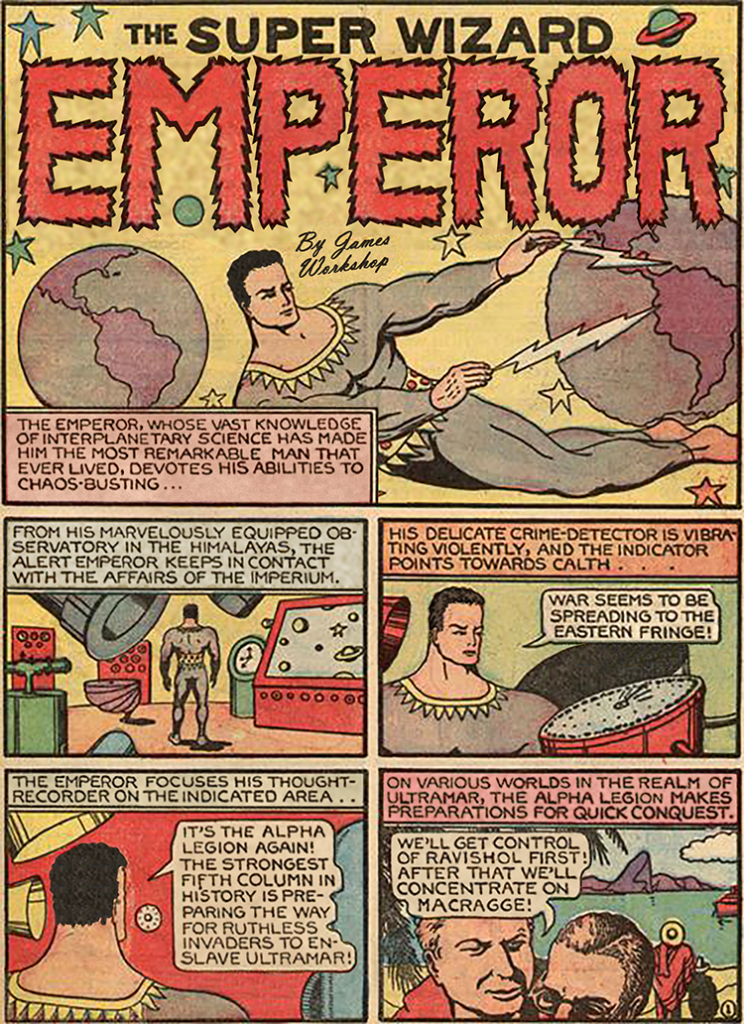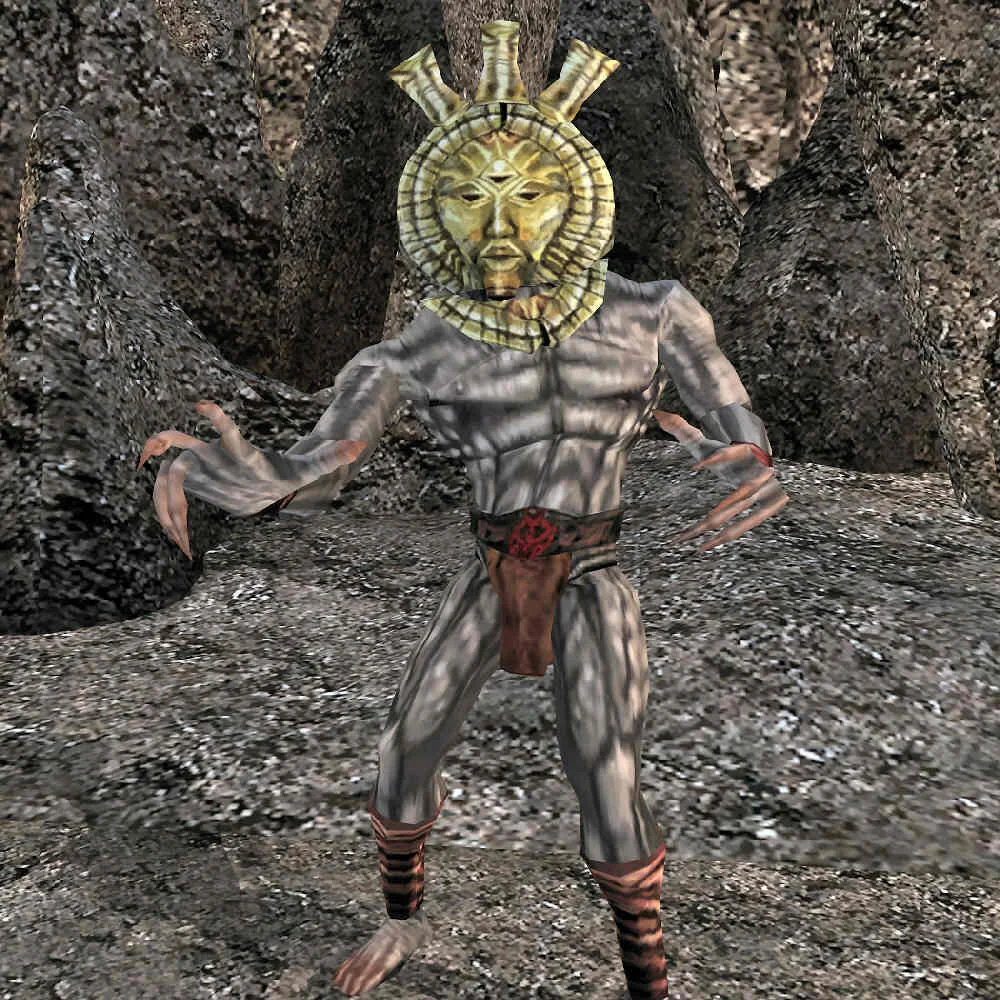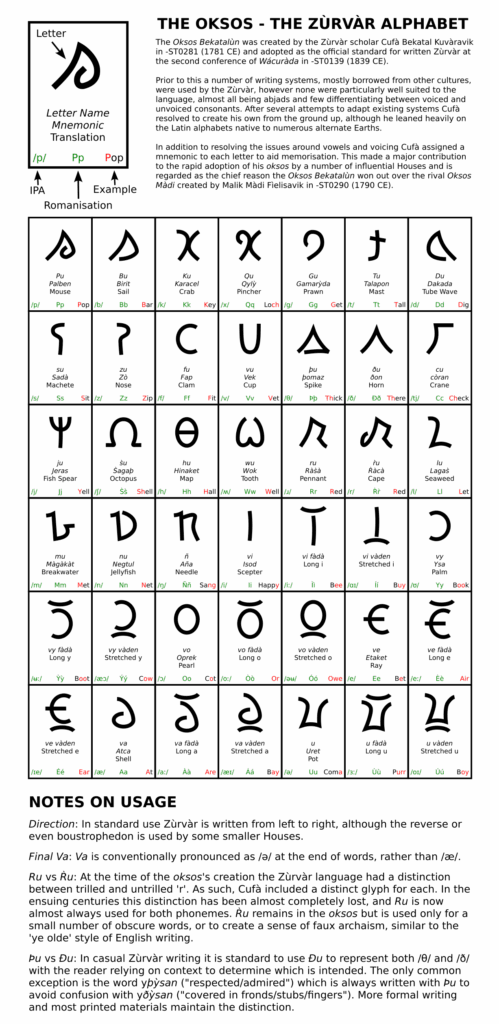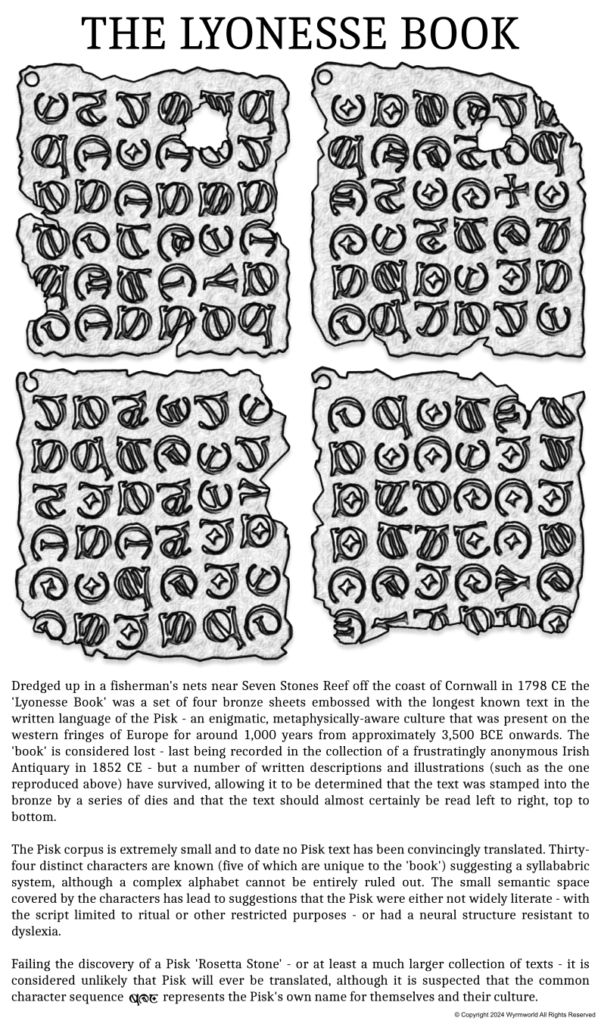
(I would offer apologies to Fletcher Hanks, but apparently he was awful)
Disordered Thoughts and Curmudgeonly Ramblings
The Fallout fan film Operation Sunburst is pretty good!
The dialogue probably needed another round of editing to handle exposition in a way that doesn’t have characters telling other characters things they should already know, calling rocket-launcher armed troops ‘sappers’ seems odd, the mutant qilin cavalry are a bit silly (and why are they using cavalry to attack a fortified building?), and it’s weird that the NCR don’t seem to have reinvented the mortar, but overall really well done! Highly recommended for any Fallout fan!
Roll on the 17th!
You may well accuse me of seeing Dagoth Ur everywhere, but you have to admit that the new Ozostium Aranthus model for Necromunda has serious Dagoth Ur energy.


(‘serious Dagoth Ur energy’ is not a phrase anyone should ever have to type)
A recent online conversation with a friend of mine in the UK…
Friend: [Son] keeps pestering me to see whether you’ve been to various liminal spaces in Australia. I tell him Australia is very big so it’s unlikely.
Me: I would be intrigued to know what liminal spaces might be available here. I didn’t know we had enough of them to count as ‘various’.
Friend: He was particularly interested in a car park in Melbourne!
Me: Well I have been to Melbourne a few times, so it’s theoretically possible that I’ve at least walked past the car park in question.
Me: Hang on, he’s not talking about the South Lawn Car Park at Melbourne University is he? Because if he is, then I have actually visited it!
Friend: Ah yes that is the one! He will be very excited!
Now what are the odds of that?

The Oksos Bekatalùn was created by the Zùrvàr scholar Cufà Bekatal Kuvàravik in -ST0281 (1781 CE) and adopted as the official standard for written Zùrvàr at the second conference of Wácuràda in -ST0139 (1839 CE).
Prior to this a number of writing systems, mostly borrowed from other cultures, were used by the Zùrvàr, however none were particularly well suited to the language, almost all being abjads and few differentiating between voiced and unvoiced consonants. After several attempts to adapt existing systems Cufà resolved to create his own from the ground up, although he leaned heavily on the Latin alphabets native to numerous alternate Earths.
In addition to resolving the issues around vowels and voicing Cufà assigned a mnemonic to each letter to aid memorisation. This made a major contribution to the rapid adoption of his oksos by a number of influential Houses and is regarded as the chief reason the Oksos Bekatalùn won out over the rival Oksos Màdi created by Malik Màdi Fìelisavik in -ST0290 (1790 CE).
Direction: In standard use Zùrvàr is written from left to right, although the reverse or even boustrophedon is used by some smaller Houses.
Final Va: Va is conventionally pronounced as /ə/ at the end of words, rather than /æ/.
Ru vs Ŕu: At the time of the oksos‘s creation the Zùrvàr language had a distinction between trilled and untrilled ‘r’. As such, Cufà included a distinct glyph for each. In the ensuing centuries this distinction has been almost completely lost, and Ru is now almost always used for both phonemes. Ŕu remains in the oksos but is used only for a small number of obscure words, or to create a sense of faux archaism, similar to the ‘ye olde’ style of English writing.
Þu vs Ðu: In casual Zùrvàr writing it is standard to use Ðu to represent both /θ/ and /ð/ with the reader relying on context to determine which is intended. The only common exception is the word yþỳsan (“respected/admired”) which is always written with Þu to avoid confusion with yðỳsan (“covered in fronds/stubs/fingers”). More formal writing and most printed materials maintain the distinction.
It occurred to me the other day that if I were running a quiz night here in Perth I would not be able to resist the temptation to irritate everyone by including a round of questions about the city itself.
To prepare for this eventuality I have devised 10 questions that can be shoved into any quiz night you might be thinking about organising, and that you can challenge yourself with right now, should that be your idea of an enjoyable time.
(Answers supplied at the end)
1: The Perth CBD is located on the country of which Aboriginal nation? For an extra point, what is the indigenous name for Perth?
2: The natural spring at the foot of Mount Eliza is named after who?
3: What is the oldest building still standing in the Perth CBD?
4: What is the indigenous name for the Swan River?
5: In April 1993 Gary Hayes broke into the Irwin Barracks at Karrakatta and did what?
6: Why is Perth called “The City of Lights”?
7: What two cities rival Perth for the title of most isolated major city in the world?
8: In 1979 a series of plaques commemorating prominent Western Australians were placed along St George’s Terrace. Who’s plaque was removed in 2014?
9: What year did the Narrows Bridge open? For a bonus point what was it originally planned to be called?
10: The postcode 6161 covers what location?
Ready for the answers?
1: Perth is on the land of the Whadjuk people of the Noongar nation. 1 point for ‘Whadjuk’ or ‘Whadjuk Noongar’. Half a point for just ‘Noongar’. The indigenous name for Perth is Boorloo.
2: The spring is named after Governor Sir Edward Kennedy. 1 point for any mention of Kennedy, unless they clearly meant President Kennedy which gets no points!
3: The oldest building in the CBD is the Old Court House in Stirling Gardens.
4: The indigenous name for the Swan River is Derbarl Yerrigan. Any spelling that is clearly meant to be ‘Derbarl Yerrigan’ is acceptable.
5: In April 1993 Gary Hayes stole an Armoured Personnel Carrier (APC). An APC is not a tank but we’ll be nice and accept ‘he stole a tank’ as correct.
6: Perth is “The City of Light” because everyone left their lights on in 1962 for orbiting American astronaut John Glenn. As long as they get this story broadly right they get a point.
7: Honolulu and Auckland rival Perth’s claim to be the world’s most isolated major city. Half a point for each one.
8: Rolf Harris’s plaque was removed in 2014.
9: The Narrows Bridge was opened in 1959. For the bonus point it was planned to be called “The Golden West” bridge.
10: 6161 is the postcode of Rottnest Island.
There you go. How did you do?
While stumbling out of bed towards the shower this morning my brain told me I should rewrite The RCMP (1965) by obscure Canadian satirical band The Brothers-in-Law to be about the BPRD from Hellboy.
I strongly suspect that people who drink don’t have to put up with this kind of nonsense.

The Palustiquendi are the descendants of escapees from the hellish chambers within which Morgoth created the first orcs from captured Elves long before the rising of the sun. Although appearing much as other Elves – Morgoth not having wrought much harm upon their bodies – their minds were twisted by his sorceries long ere their escape, rendering them scheming, suspicious, and duplicitous, quick to anger and fast to seek power by the accusation of others. Indeed, some believe the Palustiquendi did not escape, but were released by Morgoth to serve as spies and agents among the Elves, although any such scheme was doomed, as the ignoble behaviour of these piteous wretches swiftly marked them out among any untainted Eldar they encountered.
The Palustiquendi were all but wiped out during the War of the Jewels in the First Age, with few – if any – surviving the destruction of Beleriand in the War of Wrath. Legends persist however – even unto the present day – of these foul and treacherous creatures pledging their questionable allegiance to those desperate for spies and informants.
Charli XCX: Talk to me in French, talk to me in Spanish, talk to me in your own made up language…
Me: Yuhàla Càlè! Zùvà holinjá, el pevomklá.
Charli XCX: SECURITY!!


Dredged up in a fisherman’s nets near Seven Stones Reef off the coast of Cornwall in 1798 CE the ‘Lyonesse Book’ was a set of four bronze sheets embossed with the longest known text in the written language of the Pisk – an enigmatic, metaphysically-aware culture that was present on the western fringes of Europe for around 1,000 years from approximately 3,500 BCE onwards. The ‘book’ is considered lost – last being recorded in the collection of a frustratingly anonymous Irish Antiquary in 1852 CE – but a number of written descriptions and illustrations (such as the one reproduced above) have survived, allowing it to be determined that the text was stamped into the bronze by a series of dies and that the text should almost certainly be read left to right, top to bottom.
The Pisk corpus is extremely small and to date no Pisk text has been convincingly translated. Thirty-four distinct characters are known (five of which are unique to the ‘book’) suggesting a syllababric system, although a complex alphabet cannot be entirely ruled out. The small semantic space covered by the characters has lead to suggestions that the Pisk were either not widely literate – with the script limited to ritual or other restricted purposes – or had a neural structure resistant to dyslexia.
Failing the discovery of a Pisk ‘Rosetta Stone’ – or at least a much larger collection of texts – it is considered unlikely that Pisk will ever be translated, although it is suspected that a common character sequence (i1, c5, f5) represents the Pisk’s own name for themselves and their culture.